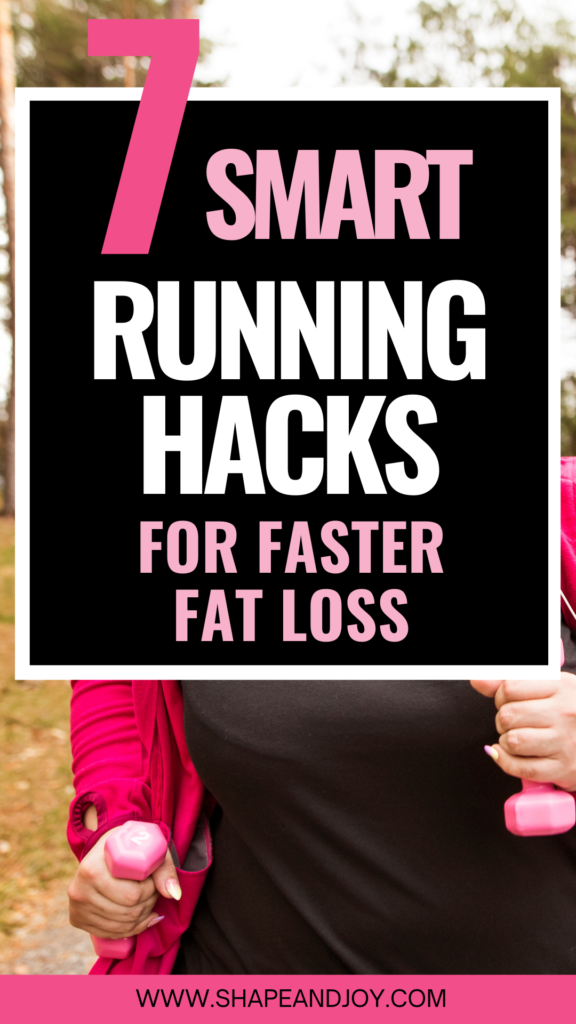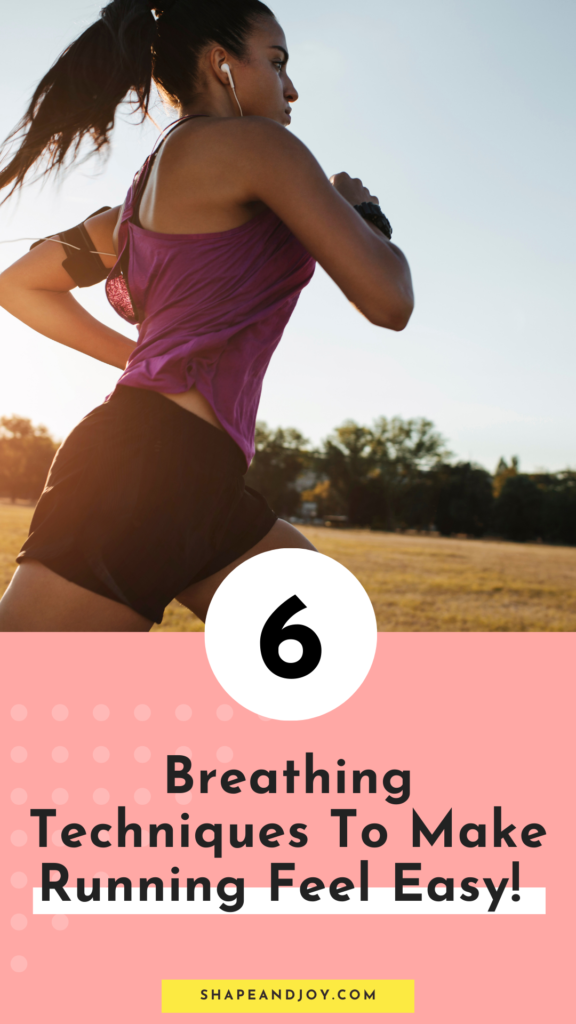Running for Weight Loss: How to Maximise Fat Burn While Running

So, you’ve decided to start running for weight loss—amazing! Running is a brilliant way to torch calories, boost your metabolism, and feel like an absolute powerhouse while doing it.
But if you think you can just throw on a pair of trainers, sprint down the road, and magically melt fat overnight… well, I hate to break it to you, but that’s not quite how it works.
I know this because I started running purely for weight loss. I wanted a way to burn fat fast, and running seemed like the best option. But somewhere along the way, something shifted. I stopped running just to lose weight, and I started running because I loved it.
It became my time to clear my head, feel strong, and move my body in a way that actually felt good—not like some dreaded chore.
And that’s the real secret to losing weight and keeping it off. Joyful movement—exercising in a way that makes you feel energised, strong, and accomplished—is what keeps you consistent.
And consistency is what actually gets results.
That said, there are ways to run smarter, not harder if your goal is fat loss. So let’s get into it—how to burn the most fat while running, stay motivated, and actually enjoy the process.
- Before You Get Started
- 1. Stop Running at the Same Pace – Switch It Up!
- 2. Run in the Fat-Burning Zone (Yes, It’s a Thing)
- 3. Strength Train – Running Alone Won’t Cut It
- 4. Don’t Just Focus on Calories Burned – Focus on Calories Burned After
- 5. Fuel Your Runs Properly (Because Starving Won’t Help You Lose Weight Faster)
- 6. Be Consistent – Fat Burn Takes Time
- 7. Fat Loss Comes from a Calorie Deficit – Here’s How to Do It Right
- Running Smarter = More Fat Burn
Before You Get Started
I get it—starting running for weight loss can feel daunting. Maybe you’re worried about injuries, stamina, or just where to even begin. Trust me, I’ve been there.
The good news? You don’t have to figure it out alone.
If you’re new to running or feeling unsure about how to start, check out How to Run When Overweight: A Guide for Beginners. It’s packed with practical tips to help you feel confident, strong, and ready to tackle your running journey—no matter where you’re starting from.
1. Stop Running at the Same Pace – Switch It Up!
Your body adapts fast, and steady-state running (while great for building endurance) isn’t the best for burning fat.
What to do instead:
- Mix in interval training: Sprint for 30 seconds, walk or jog for 1-2 minutes, repeat.
- Try hill sprints: Run up a hill as fast as you can, then walk down to recover.
- Play around with tempo runs: Run at a moderate-hard pace for 10-20 minutes in the middle of your workout.
Why it works: High-intensity bursts force your body to burn more calories during and after your run. Hello, afterburn effect!
And if you’re not sure if you’re making the classic running mistakes that slow weight loss, check out Common Running Mistakes Beginners Make (And How to Fix Them) before you go any further.
2. Run in the Fat-Burning Zone (Yes, It’s a Thing)
You’ve probably heard about heart rate zones but never really given them much thought. Well, turns out, they matter a lot if you want to burn fat efficiently.
Find Your Fat-Burning Zone
- Aim to run at 60-70% of your max heart rate (this is where your body burns more fat than carbs).
- A good rule of thumb? If you can talk but not sing while running, you’re in the right zone.
- If you’re gasping for air after 30 seconds, you’re going too hard.
Why it works: Keeping your run in this zone means you’ll burn more stored fat instead of just carbs from your last meal.
3. Strength Train – Running Alone Won’t Cut It
If you’re skipping strength training, you’re missing out on one of the biggest fat-burning boosters.
What to do:
- Add strength workouts 2-3 times a week (bodyweight exercises or weights).
- Focus on legs, core, and upper body—stronger muscles make you a better runner.
- Do plyometric exercises (jump squats, lunges, and box jumps) to build explosive strength.
Why it works: Strength training builds muscle, and muscle burns more calories at rest. More muscle = more fat burn, even while you’re chilling on the sofa.
If you’re struggling with injuries or constant soreness, strength training is even more important. Check out How to Prevent & Recover from Running Injuries so you don’t get side-lined.
4. Don’t Just Focus on Calories Burned – Focus on Calories Burned After
Here’s where most people go wrong—they obsess over how many calories they burn during a run. While that number is nice, what really matters is what happens after you stop running.
The Afterburn Effect (EPOC, if you want to sound fancy)
- High-intensity runs keep your metabolism elevated for hours after your workout.
- Sprinting, interval training, and hill workouts are best for this effect.
- If you’re running purely at an easy pace, you’re missing out on this post-run calorie burn.
Why it works: Your body works harder to recover from intense workouts, which means you keep burning fat even after your run is over.
📌 Pin this for later! ⬇

5. Fuel Your Runs Properly (Because Starving Won’t Help You Lose Weight Faster)
If you’re skipping meals or barely eating before running, you might think you’re burning more fat—but in reality, you’re just making things harder for yourself.
How to fuel for fat loss:
- Before a run: Have a small snack (banana or toast with peanut butter).
- After a run: Refuel with protein + carbs to help muscles recover.
- Stay hydrated—dehydration makes your body hold onto weight.
Why it works: If your body isn’t properly fuelled, you’ll feel sluggish, your metabolism will slow down, and you won’t get the best fat-burning effects from your run.
6. Be Consistent – Fat Burn Takes Time
You can’t go for one killer run and expect to wake up looking like a fitness model. Fat loss takes time, consistency, and patience—but if you stick with it, you WILL see results.
How to stay consistent:
- Set small goals—run 3-4 times a week instead of aiming for daily marathons.
- Track your progress—use a running tracker or take progress photos.
- Don’t give up when the scale doesn’t move—fat loss isn’t always instant, but it’s happening.
If you’re struggling to stay on track, you need a structured plan. Check out How to Build a Running Routine That You’ll Actually Stick To to make running a habit, not a chore.
7. Fat Loss Comes from a Calorie Deficit – Here’s How to Do It Right
Let’s get one thing straight—running alone won’t make you lose weight unless you’re in a calorie deficit (burning more calories than you consume). But here’s the tricky part: you need enough fuel to power your runs while still staying in a small deficit.
Cut calories too much, and you’ll feel sluggish, weak, and totally unmotivated to run. Overeat, and, well… the fat’s not going anywhere.
The key is finding balance—fueling your body properly while staying in a slight deficit so you can lose fat, run strong, and recover well.
How to do it: Focus on nutrient-dense foods that keep you full without excess calories.
- Protein (chicken, fish, tofu, eggs) helps with muscle recovery and keeps you satisfied.
- Healthy fats (avocado, nuts, olive oil) stabilise energy levels.
- Fibre-rich carbs (sweet potatoes, oats, whole grains) fuel your runs without sugar crashes.
Be mindful of post-run hunger—just because you ran doesn’t mean you should eat back all the calories you burned. Instead of reaching for ultra-processed snacks, plan post-run meals that combine protein + carbs (like eggs on toast or a protein shake with banana) to refuel properly without overdoing it.
The Ultimate Running Resource Hub – Everything You Need in One Place!
Looking for the best running tips, training plans, gear recommendations, and nutrition advice? This is your one-stop guide to starting strong, improving performance, preventing injuries, and staying motivated. Whether you’re a beginner or looking to level up your runs, these posts will help you every step of the way!
- The Ultimate Running Guide: Tips, Training & Gear
- How to Build a Running Routine That You’ll Actually Stick To
- Common Running Mistakes Beginners Make (And How to Fix Them)
- How to Run When Overweight: A Guide for Beginners
- Running for Weight Loss: How to Maximise Fat Burn
- Running Nutrition: How to Fuel Your Runs Based on Your Goals
- Breathing Techniques for Running: How to Run Without Getting Winded
- How to Prevent & Recover from Running Injuries
- Best Running Shoes for Beginners
Running Smarter = More Fat Burn
If you want to start running for weight loss, you need to run smart, not just run more. Here’s what to focus on:
- Mix up your runs with intervals, hills, and steady-state cardio
- Stay in the fat-burning zone for maximum results
- Add strength training to boost metabolism and prevent injuries
- Focus on the afterburn effect, not just calories burned during your run
- Fuel your body properly so it actually burns fat efficiently
- Stay consistent—because results don’t happen overnight
Finally, don’t obsess over the scale—track progress in other ways like how your clothes fit, your energy levels on runs, or how much stronger you feel.
A 300-500 calorie deficit per day is all you need for steady, sustainable fat loss—anything more and you’ll risk burnout, sluggish runs, and quitting altogether.
Fuel smart, run strong, and enjoy the process—because feeling good is just as important as losing weight.
Now, lace up those trainers and go make that run count!
📌 Pin this for later! ⬇





